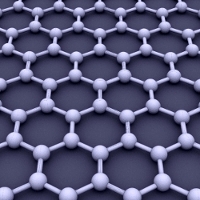- Home
- Research
Research
Exciting new possibilities for applications beyond standard electronics are provided by novel materials where electronic correlations allow collective phenomena such as (multi)ferroic behavior or superconductivity, or unusual competing ground states to emerge. We are particularly interested in studying such behavior with nanoscale resolution in low dimensional systems where effects of correlations and disorder play a proeminent role, and an extraordinary range of parameters can be used to modulate the material properties.
Interfaces and domain walls in correlated oxides are one such very promising system, since they are intrinsically nanoscale structures which can present radically new properties. For example, recent discoveries include conduction, unexpected electromechanical responses, as well as potential ferromagnetism and polarization at domain walls in insulating, non-ferromagnetic or non-polar materials, and a two-dimensional superconducting electron gas and unusual ferroelectricity related specifically to the presence of oxide interfaces. Such structures, highly interesting from the point of view of fundamental physics, can also be used as nanoscale device components in miniaturized transistors or other memory elements, junctions, sensors and many more. Using functionalized carbon nanotubes as scanned probe microscopy tips allows us unprecedented access to such novel functional properties, including ultrahigh resolution in magnetic force microscopy, and the capacity to carry extremely high current densities during local conductance mapping.
Ferroic domain walls also provide a useful model elastic disordered system: their behavior is governed by the competition between their elastic energy, minimizing the domain wall surface, and the randomly varying potential landscape which allows pinning, leading to characteristic roughening, and a complex dynamic response. Understanding the out-of-equilibrium physics of such systems, as well as the effects of a heterogenous disorder landscape and a potentially rich internal structure are some of the key experimental and theoretical challenges in this field.
Finally, carbon nanotubes and graphene are themselves another intrinsically nanoscale system with unique electronic and structural properties and great potential for applications. Combining these with the remanent, switchable polarization of epitaxial ferroelectric films allows both ferroelectric field effect modulation of carbon nanotube or graphene charge carrier density, and extremely local polarization control using carbon nanotubes as an electric field source.
Research topics

Optimizing CVD growth of graphene (in collaboration with the group of A. Morpurgo)





